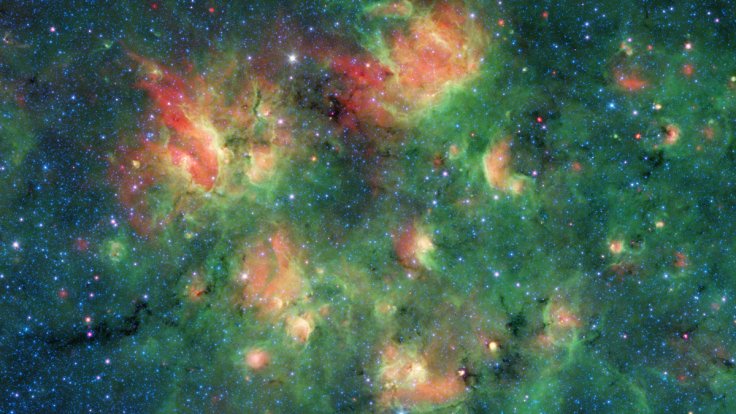
NASA's Spitzer Space Telescope was able to capture a stunning infrared image of a star-filled region within the Milky Way galaxy. Aside from the various colors produced by stars, the telescope was also able to photograph cosmic bubbles inside the region.
The latest image taken by Spitzer features massive clouds filled with dust, gas and young stars. According to NASA, this region is located inside Milky Way within the constellation known as Aquila. Within these clouds are bubbles that contain hundreds to thousands of young stars.
As noted by the space agency, there are over 30 bubbles in Spitzer's latest photo. Each of the bubbles, many of which can be found near the border of the region, are about 10 to 30 light-years across. They were most likely formed after they were inflated by the wind and radiation generated by the young stars growing in the area.
The various colors that appear in Spitzer's photo were caused by the space telescope's special system that detects infrared light, which cannot be seen by the human eye. Through spritzer, the varying infrared wavelengths emitted by the different cosmic objects in the photo can be spotted. NASA noted that each of the prominent colors in the image represents the different wavelengths.
"The colors in this image represent different wavelengths of infrared light," NASA said in a press release. "Blue represents a wavelength of light primarily emitted by stars; dust and organic molecules called hydrocarbons appear green, and warm dust that's been heated by stars appear red."
Aside from the bubbles as well as the clouds of gas, dust and stars, red bow shocks can also be seen in Spitzer's photo. According to NASA, bow shocks are formed due to the winds generated by the fast-moving stars in the region.
As these stars dart across the cosmic clouds, the wind generated by their movement pushes away the scattered dust in the surroundings.
"Also visible are four bow shocks – red arcs of warm dust formed as winds from fast-moving stars push aside dust grains scattered sparsely through most of the nebula," NASA explained.









